
His Name Is Alive is an American experimental rock band/project from Livonia, Michigan. After several self-released cassettes, they debuted on 4AD Records in 1990, starting a long run at the label. Throughout the band's long history, leader Warren Defever has been the only constant member, with a variety of musicians and singers contributing over the years.

Marion Brown was an American jazz alto saxophonist, composer, writer, visual artist, and ethnomusicologist. He was a member of the avant-garde jazz scene in New York City during the 1960s, playing alongside musicians such as John Coltrane, Archie Shepp, and John Tchicai. He performed on Coltrane's landmark 1965 album Ascension. AllMusic reviewer Scott Yanow described him as "one of the brightest and most lyrical voices of the 1960s avant-garde."

L.A. Is My Lady is the 57th and final solo studio album by American singer Frank Sinatra, released in 1984 and produced by Quincy Jones. While the album was Sinatra's last, he recorded five further songs, only four of which have been officially released.

Famous Blue Raincoat: The Songs of Leonard Cohen is the sixth studio album recorded by the American singer Jennifer Warnes. It debuted on the Billboard 200 on February 14, 1987, and peaked at No. 72 in the US Billboard chart, No.33 in the UK albums chart, and No.8 in Canada. Originally released by Cypress Records, it was reissued by Private Music after Cypress went out of business. It is the only Jennifer Warnes album to make the UK albums chart.
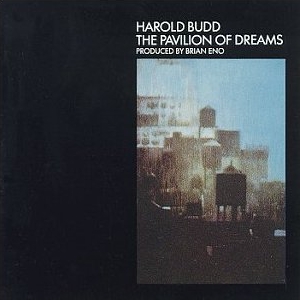
The Pavilion of Dreams is the second album from minimalist composer Harold Budd. It was produced by Brian Eno. Billed as "an extended cycle of works begun in 1972," it was recorded in 1976 but not released until 1978 on Eno's label Obscure Records. It was later re-released on Editions EG in 1981.
Nomo is an American band from Ann Arbor, Michigan, United States. The band formed at the University of Michigan, and is not to be confused with the 1980s Pop/New Wave band of the same name fronted by California singer-songwriter David Batteau, which is best known for the 1985 minor hit "Red Lipstick".

Live is a concert recording by fusion band Return to Forever. It was recorded at the Palladium in New York City on May 20th & 21st, 1977 as part of the tour to support the Musicmagic album. This was the only tour to feature the 1977 group, which included original members Chick Corea, bassist Stanley Clarke and saxophonist Joe Farrell, along with keyboardist/vocalist Gayle Moran, and a six-piece horn section.
Steve McCall was an American jazz drummer.
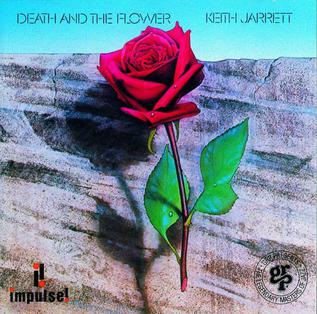
Death and the Flower is an album recorded by Keith Jarrett in October 1974 during two sessions that also produced Back Hand. Released in 1975, the disc features the pianist's "American Quartet" with percussionist Guilherme Franco.
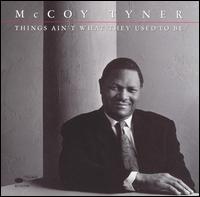
Things Ain't What They Used to Be is an album by McCoy Tyner released on the Blue Note label. Like Revelations (1987), it was recorded at Merkin Hall and features solo performances by Tyner, in addition he performs three duets with guitarist John Scofield and two with tenor saxophonist George Adams. The Allmusic review by Scott Yanow states that "the pianist makes every melody sound like a fresh original through his distinctive chord voicings and harmonies. This is a strong effort by one of the best."
"Candy-O" is a song by the American rock band the Cars, the title track of their 1979 album Candy-O. Written by Ric Ocasek, the song was not based on a real person. The song features a prominent guitar solo by Elliot Easton and lead vocals by bassist Benjamin Orr.

In the 1970s in jazz, jazz became increasingly influenced by Latin jazz, combining rhythms from African and Latin American countries, often played on instruments such as conga, timbale, güiro, and claves, with jazz and classical harmonies played on typical jazz instruments. Artists such as Chick Corea, John McLaughlin and Al Di Meola increasingly influenced the genre with jazz fusion, a hybrid form of jazz-rock fusion which was developed by combining jazz improvisation with rock rhythms, electric instruments, and the highly amplified stage sound of rock musicians such as Jimi Hendrix. All Music Guide states that "..until around 1967, the worlds of jazz and rock were nearly completely separate." However, "...as rock became more creative and its musicianship improved, and as some in the jazz world became bored with hard bop and did not want to play strictly avant-garde music, the two different idioms began to trade ideas and occasionally combine forces." On June 16, 1972 the New York Jazz Museum opened in New York City at 125 West 55th Street in a one and one-half story building. It became the most important institution for jazz in the world with a 25,000 item archive, free concerts, exhibits, film programs, etc.

Afternoon of a Georgia Faun is an album by American jazz saxophonist Marion Brown recorded on August 10, 1970 and released on ECM later that year. The sextet features fellow saxophonists Anthony Braxton and Bennie Maupin, pianist Chick Corea, and vocalists Jeanne Lee and Gayle Palmore, backed by two percussionists on one side and five on the other.

Harold Budd was an American ambient/avant-garde composer and poet. Born in Los Angeles, he was raised in the Mojave Desert.

Geechee Recollections is an album by the American jazz saxophonist Marion Brown recorded in 1973 and released on the Impulse! label. Along with Afternoon of a Georgia Faun and Sweet Earth Flying, it was one of Brown's albums dedicated to the US state of Georgia. The Geechee of the title are a distinct African-American cultural group living in costal regions of Georgia and North Carolina.
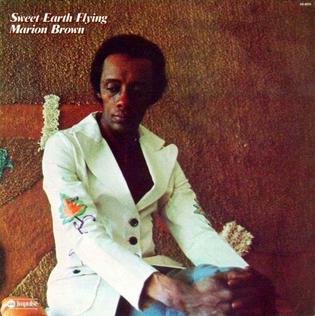
Sweet Earth Flying is an album by American jazz saxophonist Marion Brown recorded in 1974 and released on the Impulse! label. Along with Afternoon of a Georgia Faun and Geechee Recollections, it was one of Brown's albums dedicated to the US state of Georgia.
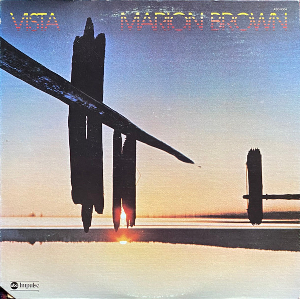
Vista is an album by American jazz saxophonist Marion Brown recorded in 1975 and released on the Impulse! label.
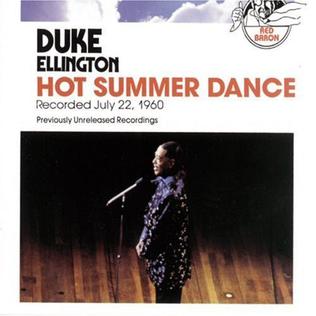
Hot Summer Dance is a live album by American pianist, composer and bandleader Duke Ellington recorded at Mather Air Force Base in California and first released as a CD on Bob Thiele's Red Baron label in 1983.

Juba-Lee is an album by American saxophonist Marion Brown. It was recorded in November 1966 in New York City, and was released in 1967 on the Fontana label. The album features Brown on alto saxophone, Bennie Maupin on tenor saxophone, Alan Shorter on trumpet and flugelhorn, Grachan Moncur III on trombone, Dave Burrell on piano, Reggie Johnson on bass, and Beaver Harris on drums. The album was recorded roughly a month prior to Brown's Impulse! debut, Three for Shepp. The tracks "Juba-Lee" and "Iditus" also appear on the 2019 ezz-thetics album Capricorn Moon To Juba Lee Revisited.

Marion Brown Quartet is an album by American saxophonist Marion Brown, his debut as a leader. It was recorded in November 1965 in New York City, and was released in 1966 on the ESP-Disk label. The album features Brown on alto saxophone, Alan Shorter on trumpet, Bennie Maupin on tenor saxophone, Reggie Johnson and Ronnie Boykins on bass, and Rashied Ali on drums.

















